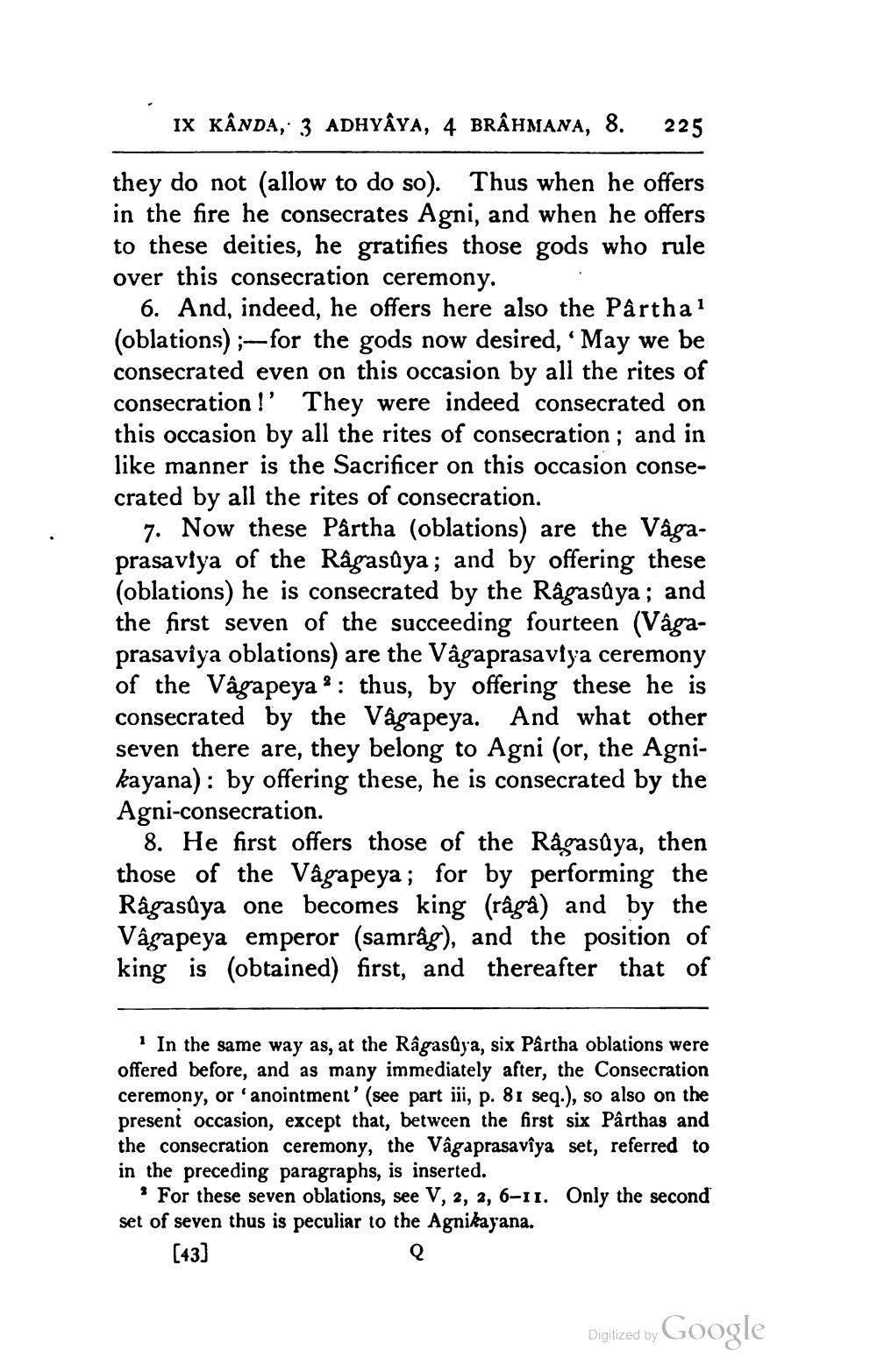________________
IX KANDA, 3 ADHYAYA, 4 BRÂHMANA, 8.
225
they do not (allow to do so). Thus when he offers in the fire he consecrates Agni, and when he offers to these deities, he gratifies those gods who rule over this consecration ceremony.
6. And, indeed, he offers here also the Pârthal (oblations) ;– for the gods now desired, ‘May we be consecrated even on this occasion by all the rites of consecration!' They were indeed consecrated on this occasion by all the rites of consecration; and in like manner is the Sacrificer on this occasion consecrated by all the rites of consecration.
7. Now these Pärtha (oblations) are the Vagaprasaviya of the Râgasůya; and by offering these (oblations) he is consecrated by the Râgasûya ; and the first seven of the succeeding fourteen (Vâgaprasaviya oblations) are the Vâgaprasaviya ceremony of the Vâgapeya: thus, by offering these he is consecrated by the Vâgapeya. And what other seven there are, they belong to Agni (or, the Agnikayana): by offering these, he is consecrated by the Agni-consecration.
8. He first offers those of the Râgasûya, then those of the Vâgapeya; for by performing the Râgasůya one becomes king (râga) and by the Vâgapeya emperor (samråg), and the position of king is (obtained) first, and thereafter that of
In the same way as, at the Râgasûya, six Pârtha oblations were offered before, and as many immediately after, the Consecration ceremony, or 'anointment' (see part iii, p. 8: seq.), so also on the present occasion, except that, between the first six Pârthas and the consecration ceremony, the Vâgaprasavîya set, referred to in the preceding paragraphs, is inserted.
? For these seven oblations, see V, 2, 2, 6-11. Only the second set of seven thus is peculiar to the Agnikayana.
[43]
Digitized by Google




